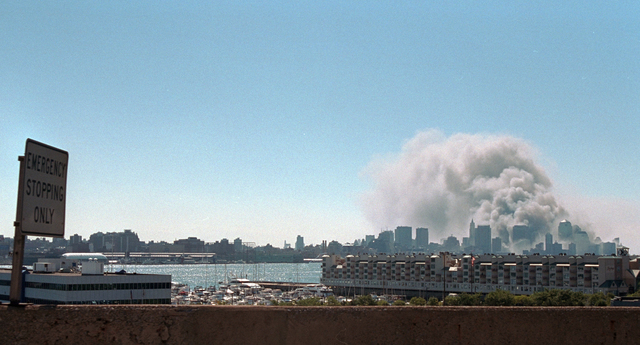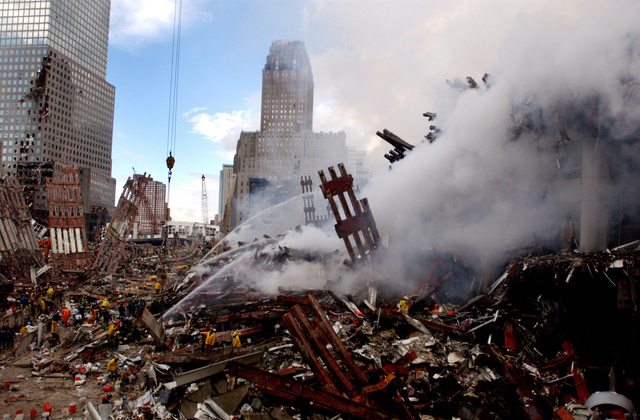by Tim Golden, ProPublica
This story was originally published by ProPublica. ProPublica is a Pulitzer Prize-winning investigative newsroom. Sign up for The Big Story newsletter to receive stories like this one in your inbox.
With families of 9/11 victims threatening to protest his appearance at events commemorating the 20th anniversary of the attacks, President Joe Biden took the notable step last week of ordering the Justice Department and other agencies to disclose new portions of their long-secret files on the Qaida plot.
The executive order on Sept. 3 appears to stave off the prospect that the president might be picketed on the eve of 9/11 memorial services, just days after the final, chaotic withdrawal of U.S. forces from Afghanistan.
What remains in doubt is whether the declassification of FBI documents will resolve the mysteries that still surround the case or provide evidence to support the families’ claims in a federal lawsuit that the kingdom of Saudi Arabia bears some responsibility for the attacks.
“He has the power to give us closure,” a spokesperson for the families, Brett Eagleson, said of the president. “He has now made us a promise, but he still needs to fulfill it.”
The relatives’ yearslong fight against Justice Department secrecy has lately centered on a list of 45 FBI documents that the government has identified as relevant to the families’ lawsuit in a federal district court in New York.
Lawyers for the families said those documents represent only a small fraction of the government files they should be entitled to under a 2018 judge’s order. That order limits the plaintiffs to information on a handful of figures who have been tied to the first two Qaida hijackers to arrive in the United States, Nawaf al-Hazmi and Khalid al-Mihdhar.
The two Saudis flew into Los Angeles from Bangkok on Jan. 15, 2000. Although they had been trained as terrorists, they spoke almost no English and had only the vaguest notions about how to operate in a Western society, people who knew them told the FBI after the attacks.
The pair quickly made their way to a new mosque that the Saudi government had built in Culver City, California, not far from Sony Pictures Studios. During a purportedly chance meeting at a nearby cafe, they were invited to settle in San Diego by Omar al-Bayoumi, a shadowy middle-aged Saudi graduate student who had already been investigated by the FBI as a possible spy for the kingdom.
The CIA had been following Hazmi and Mihdhar as they met with other Qaida operatives in Malaysia in early January 2000. The agency somehow lost their trail when the hijackers flew with their own Saudi passports to Thailand and on to Los Angeles. Even after the CIA learned in March 2000 that at least one of the terrorists had entered the country, it did not notify the FBI until late August 2001.

CIA officers would later interrogate the architect of the plot, Khalid Sheikh Mohammed, about why he sent the first two hijackers to Southern California and whether they had any support network waiting there. (The bipartisan 9/11 Commission found his account implausible.) But most FBI agents investigating the attacks had limited access to the CIA’s intelligence, and even less of that information has since been made public.
Among the other potential pieces of evidence that have never emerged from the government’s investigation are closed-circuit videotapes showing Hazmi and Mihdhar’s arrival at Los Angeles International Airport. Former FBI investigators said they were never able to locate any tapes despite their repeated requests, leaving questions about whether anyone had met the hijackers’ plane.
The FBI’s handling of evidence it did gather has raised even sharper questions. Just last week, representatives of the 9/11 families wrote to the Justice Department’s inspector general, Michael Horowitz, asking that he investigate whether the FBI might have deliberately hidden or destroyed some evidence to avoid its disclosure.
That request followed claims by the government in federal court that it could no longer find some materials and information it had gathered in the inquiry, including FBI witness interviews and telephone records of people linked to the hijackers. Among the items that the bureau has said it had lost is a home video from a party in San Diego where Bayoumi introduced the two hijackers to a group of his friends.
A report in 2020 by ProPublica and The New York Times Magazine recounted that soon after the FBI launched Operation Encore, a follow-on investigation to the original 9/11 case, in 2007, agents learned that FBI archivists were about to dispose of evidence seized from Bayoumi in the days after the attacks.
Those materials included a diagram that seemed to show the trajectory of a plane crashing to the ground — resembling the way that American Airlines Flight 77, which Hazmi and Mihdhar helped to hijack, had flown into the Pentagon. A former commercial airline pilot who reviewed the diagram in 2012 told FBI agents there was “a reasonable basis” to suspect that it might have been used in preparation for the attacks, according to a newly disclosed statement in the federal litigation.
At the center of the 9/11 families’ lawsuit is the theory that Bayoumi and a Saudi religious official based in Los Angeles, Fahad al-Thumairy, provided help to the two hijackers. In an interview with the 9/11 Commission, Bayoumi claimed he had no idea the men were Qaida members. Thumairy told the commission staff he did not even recall meeting the two men.
Most of the U.S. national security establishment has long discounted the possibility that the Saudi royal family might have knowingly supported the plot. The kingdom viewed Osama bin Laden as a subversive enemy, and the attacks had overwhelmingly negative repercussions for Saudi interests.
But questions remain about the ties between the Qaida operatives and Saudi religious institutions. Saudi clerics operated with considerable autonomy before 9/11, propagating the kingdom’s conservative Wahhabi doctrine around the world with generous funding from the state. They also supported a number of charities tied to al-Qaida and other militant Islamist groups.
After 9/11, two teams of FBI investigators began to examine the activities of Saudi religious officials who had been operating in the United States. By 2006, the bureau had quietly forced dozens of accredited diplomats and others to leave the country, usually without filing any criminal charges.
Operation Encore, which is also referred to as “the subfile case,” concentrated closely on Hazmi and Mihdhar and the people who assisted them in California. But the investigators also left behind big holes: Although they discovered that Bayoumi was not actually studying and was being paid indirectly by a Saudi defense agency, for instance, they were unable to determine whether he had ties to the kingdom’s intelligence services or its religious bureaucracy.
Encore received little support from senior FBI officials, agents involved in the effort said. It was effectively shut down in 2016, when the chief of a New York counterterrorism task force disbanded the small team of investigators and analysts who were working the case.
However, as ProPublica revealed last year, a senior analyst on the Encore team left an important marker behind. Before moving on to a new post, other investigators said, the analyst compiled a detailed 16-page summary of the Encore findings and filed it electronically so that it could not be easily deleted from the FBI’s computer system. That document, dated April 4, 2016, is one that Biden specifically ordered the Justice Department to review for declassification “no later” than Sept. 11 of this year.
Until last month, the Justice Department had argued repeatedly in court that the FBI could not disclose key documents from the 9/11 inquiry because its investigation was ongoing. Since 2017, though, virtually no significant investigative activity has been cited in FBI files that have been shared with lawyers for the families.
During his campaign, Biden wrote to the 9/11 families that he supported their quest for “full truth and accountability” in the attacks, promising new transparency if he was elected. After more than 1,700 family members warned him to avoid memorial events this year unless he made good on his pledge, the Justice Department announced on Aug. 9 that the FBI had finally closed the Encore investigation and would work to “identify additional information appropriate for disclosure.”
That wasn’t good enough, the families responded. As they moved forward with plans for anti-Biden protests one day before the 20th anniversary, the president issued his executive order.
The aggressive secrecy of the Justice Department peaked under the Trump administration and former Attorney General William Barr, who asserted in 2019 that materials from the FBI investigation must be protected as state secrets. But efforts to safeguard both intelligence sources and Saudi sensitivities date back to the Bush and Obama administrations.
“The Bush administration was cozy with the Saudis, and Obama didn’t want to fight and was concerned about keeping Saudi support because of ISIS,” one former senior intelligence official said. “Now, there is an opportunity for this administration to say, yes, the Saudi relationship is important, but we can take a different approach to this issue.”










